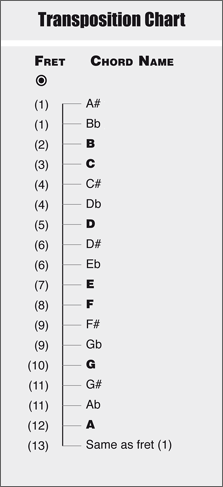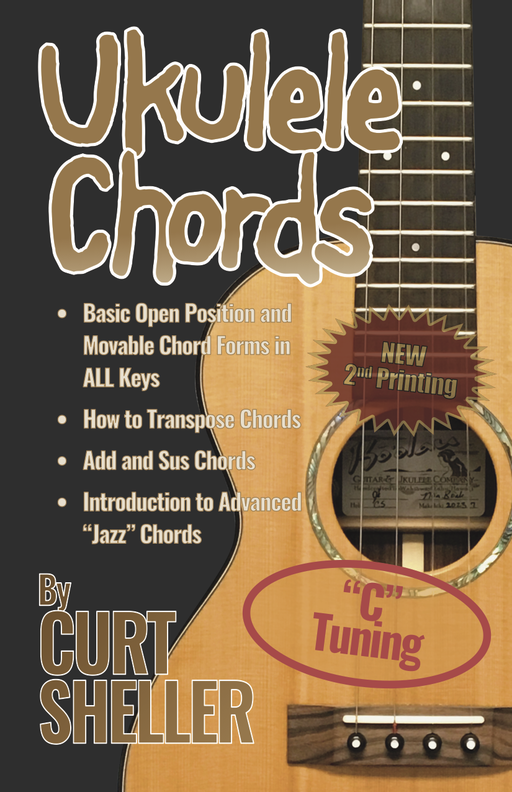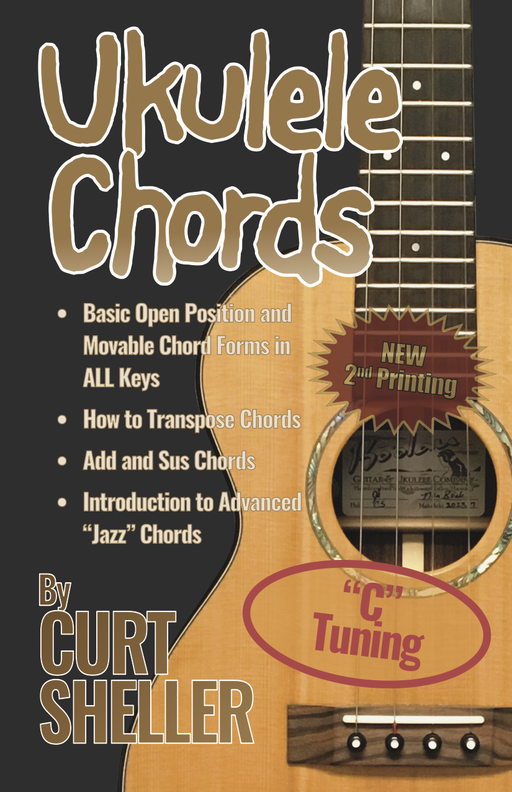Open position Am chord and its movable form and variations.
Open position Am and its movable form and variations.
Available for Premium Site Access Plans Only


Checkout the Learn a Chord a Day lessons for Open Position Am for all the information you can get from a chord.
Chord Tones – A C E
The chord tones of an A minor ( Am ) chord are the 1st, flatted 3rd, and 5th scale degrees of the A Major Scale ( A B C# D E F# G# A' ) .


- 1 – the Root or letter name of A is A
- b3 – the flat third of A is C
- 5 – the fifth of A is E


 Use the Root or perceived root of the chord to transpose to different keys.
Use the Root or perceived root of the chord to transpose to different keys. A larger sized transposition chart is available in the Ukulele Chords book. This is the book these expanded chord lessons are based on.
A larger sized transposition chart is available in the Ukulele Chords book. This is the book these expanded chord lessons are based on.

Remembering Chords Relative to Known Chords
A chord can be remembered or memorized relative to chords that you might already know.
Using the numeric chord formula for a major chord (1 3 5) and the formula for a minor chord (1 b3 5) you notice that only the third is different. For A major it is a C# for the third and for Am it is a C natural.
Open Position

Movable Form
.png)
Open Position

Movable Form
.png)
chordthat, at its foundation is not a chord but a DYAD.

.png)
.png)
.png)
Related Lessons, Videos, Lesson Series, Songs, Books & Reference Charts, Resources & Assets, Workshops are below.
Learn a new Ukulele chord every day of the year. The chord for January 6th is Am. The 'm' is pronounced 'minor'.
The original, first “Am” chord was discover deep in the Consolidation Coal Company mine in Butcher Holler, Van Lear, Kentucky USA - by . . . . . . . . . . . “A minor”

Finally, learn the names of the notes of the ukulele fingerboard in C tuning .

Learn the six fingering principles to navigating the ukulele fingerboard. Fingering is one of the most universal topics. Book: Six Secrets of the Ukulele Fingering

Harmonic Analysis is the understanding of the functional sequence of chords. It is the process used to analyze the harmonic structure of a progression, song or composition. Book: Harmonic Analysis for Scale Selection and Chord Substitution

Learn to read single note melodies in the first/open position is a lot easier than you might think. Book: Ukulele – Reading Music Series – Primer

An organized collection of daily practice and reference material for the contemporary ukulele player for developing the vocabulary and knowledge necessary for single note playing. Book: Daily Practice Material for the Contemporary Ukulele
Checkout the Books & Reference Charts for additional Handy, Dandy Reference Charts.

Ukulele Fingerboard Chart for C Tuning, Low or High G – G C E A

Ukulele Fingerboard Chart for G Tuning, Low or High A – D G B E

A handy reference chart of all 15 major and relative minor key signatures. US Letter 8.5 x 11 sized (ANSI-A), A4
Checkout the Books & Reference Charts for additional Handy, Dandy Reference Charts.







.jpg)